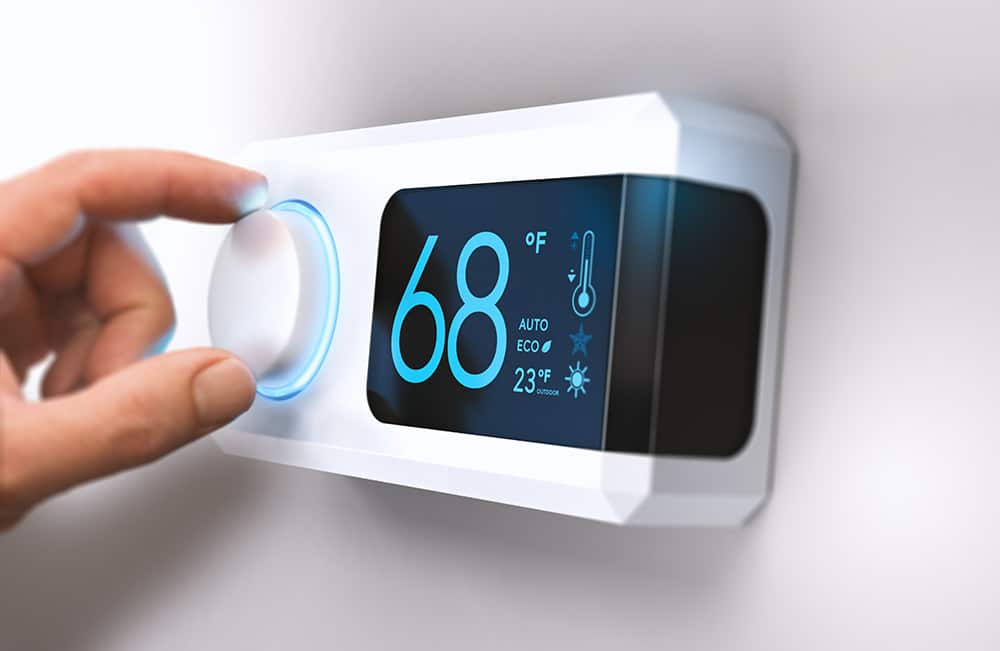If you have a ductless heating system, congratulations! You already know what it’s like to experience superior home comfort during Boston’s brutal winters. These systems have a lot of features that make it easier to customize your indoor temperature and humidity during the colder months, including things like zoned heating, dry mode, and auxiliary and emergency heating.
Below, we explore the later two functions and how they work to keep you warm in the winter when temperatures plummet. Plus, we give tips on how to know when to use your emergency heat setting and when to know if you should contact a professional who can help you.

Understanding Auxiliary Heat
When a ductless heating system senses that the temperatures outside are too cold for it to keep up with, the auxiliary heat setting will automatically get turned on. But for your system to be able to do this, you must have first connected it to a backup heating system, like your central HVAC or gas furnace. If you don’t have a backup system, you won’t have access to auxiliary or emergency heat.
There’s no specific temperature at which auxiliary heat settings are activated — instead, one of the following must happen:
- Outdoor temperatures are between 3 to 8 degrees Fahrenheit above freezing while your indoor temperature is 3 degrees below where you’ve set your thermostat
- Your mini split heat pump is in defrost mode
If your auxiliary heat runs for an extended period, especially if the weather isn’t too cold, there may be a problem with your mini split that requires repair. For example, you may be dealing with a bad compressor, a malfunctioning fan motor, or a fried defrost control board. These problems generally require the help of a trained professional.
Understanding Emergency Heat
Unlike auxiliary heat, emergency heat doesn’t come on automatically and must be manually activated on your thermostat. It’s a last-resort setting that should only be used if your system’s compressor has failed or the outdoor weather conditions are extreme. Emergency heat must also be manually turned off and will continue to run until it is.
While helpful, your emergency heat setting shouldn’t be used for extended periods since it can put a lot of extra wear and tear on your heat pump. It also puts extra stress on your backup heating systems.
Even so, emergency heat may be necessary if your heat pump fails and you can’t get same-day repair. Cold temperatures can be life-threatening, especially for children and elderly people. Your emergency settings should provide enough warmth to get you through until a contractor can come to service your equipment.
Just keep an eye on your upcoming energy bill, because it’s likely to be significantly higher with the amount of power that using emergency heat requires.
Deciding When to Use Emergency Heat
As the name suggests, you should only turn on your emergency heat when you’re in a heating emergency. If possible, try to use your auxiliary heat setting first. This allows your system to automatically toggle between your primary and backup heating systems as needed for better efficiency and comfort.
Remember that on extremely cold days, your system could be working just fine and still have trouble keeping up, simply because it’s not possible for any brand of equipment to function optimally in frigid conditions.
However, if your primary heating source has failed entirely or is otherwise incapable of providing warmth, you’ll need to turn on your emergency heat setting and contact a qualified HVAC technician as soon as possible.
Once you flip the switch so to speak, you’ll see a red light indicating that your emergency heat is on. This will stay lit until you switch your system back to auxiliary or standard heat mode. If this light is on and you didn’t activate your emergency heat setting, this could indicate a problem with your system.
How the Mitsubishi Electric Diamond Elite Contractors at N.E.T.R., Inc. Can Help
If you’re using emergency heat, it’s important to call for help as soon as possible to diagnose the problem. Sometimes using your ductless system’s auxiliary and emergency heat settings is unavoidable when the weather is extremely cold, but it’s important to make sure that’s the problem and there’s not something else wrong with your system.
Call the Mitsubishi Electric Diamond Elite contractors at (781) 757-5734 to schedule your service or fill out our quick online contact form and we’ll get back to you right away.

